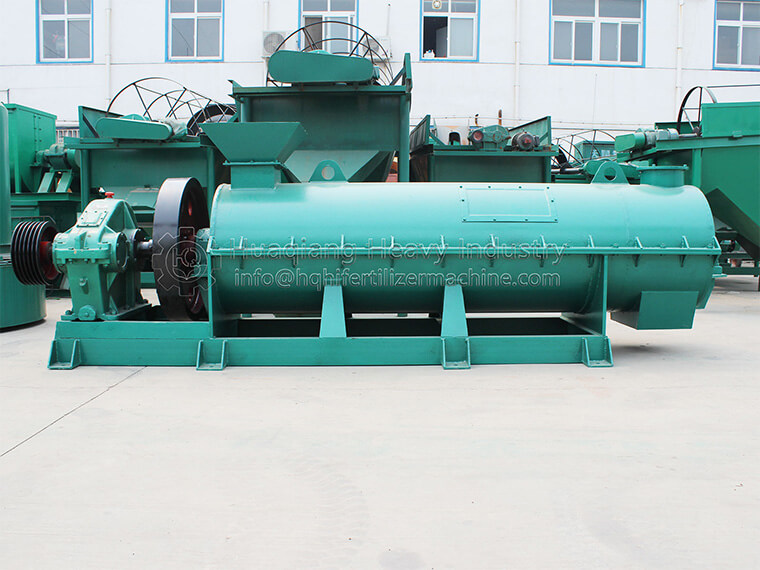The organic fertilizer agitator granulator is used to granulate various organic substances after fermentation, breaking through the conventional organic granulation process. Before granulation, the raw materials do not need to be dried or crushed, and spherical particles can be processed directly with ingredients, which can save a lot of energy.
The complete production line of stock conversion, stirring, and granulation is used to process organic raw materials after fermentation. It combines various advantages. Before granulation, the fermented raw materials are crushed, and the ingredients are directly mixed with a mixer into the stirring tooth granulator machine to produce spherical particles. The particles produced by this machine are spherical, with an organic content of up to 100%, greatly saving energy and improving utilization efficiency. The direct goal of the customer has been achieved by directly processing pure organic matter into particles, and utilizing the characteristic of organic fertilizer raw materials being embedded and enlarged under certain conditions. No additives, adhesives, etc. need to be added during granulation. After the finished product is produced, the particle strength is very good. After granulation, it is directly screened to reduce drying energy consumption and save coal electricity.
The working principle of the stirring tooth granulator equipment is to use the high-speed rotating mechanical stirring force and the resulting aerodynamic force to continuously mix, granulate, spheroidize, compact and other processes of fine powder materials in the machine, thereby achieving the purpose of granulation. The particle shape is spherical, with a sphericity of ≥ 0.7 and a particle size generally between 0.3-3 millimeters. The particle formation rate is ≥ 80%. The size of the particle diameter can be adjusted appropriately by the material mixing amount and the spindle speed. Generally, the lower the mixing amount, the higher the speed, and the smaller the particle.